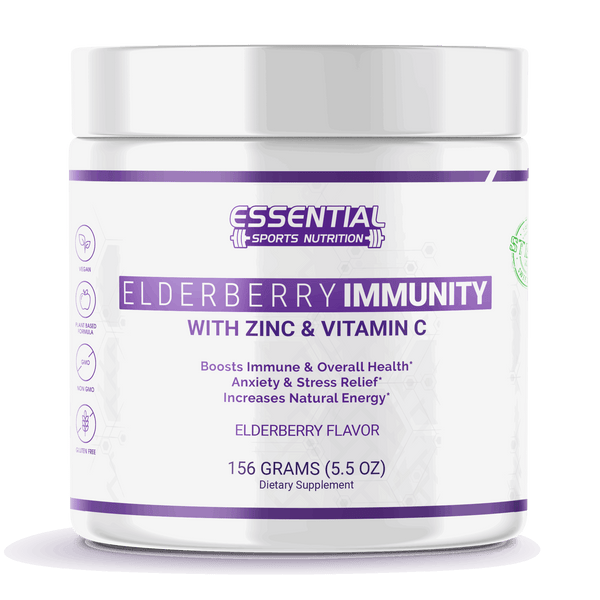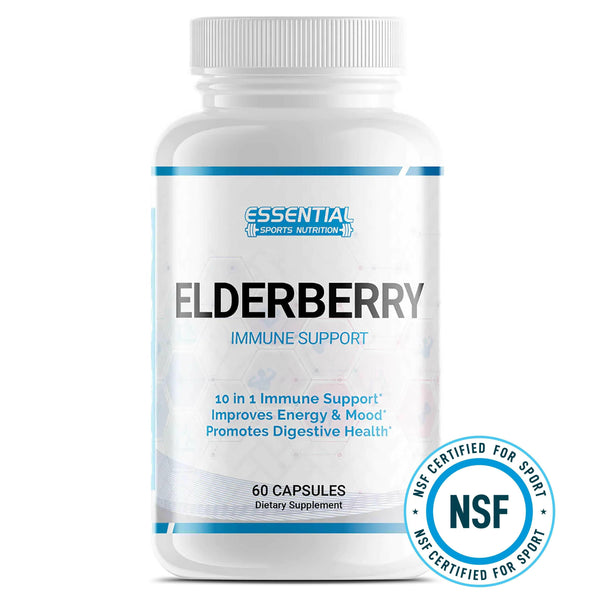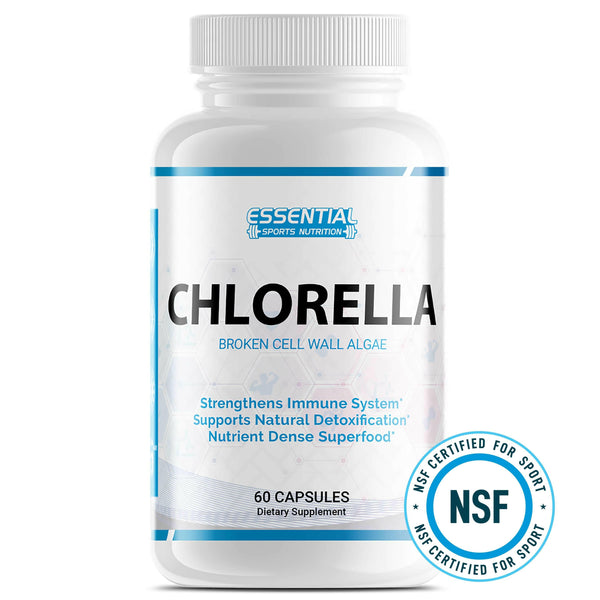From Veggies to Meat: Vertical Diet vs. Carnivore - Which Reigns Supreme?
The Vertical Diet focuses on nutrient-dense, easily digestible foods like red meat and white rice, making it ideal for high-intensity athletes. It balances macronutrients and promotes gut health. The Carnivore Diet, on the other hand, relies exclusively on animal products, emphasizing protein and fat, but risks nutrient deficiencies and lacks fiber. While the Carnivore Diet may aid fat loss and hormone regulation, its restrictive nature might limit performance and long-term health. The Vertical Diet offers a more balanced approach, supporting endurance and muscle recovery. Explore how each diet could fit into your lifestyle for peak health and performance.

Key Takeaways
The Vertical Diet offers a balanced nutrient profile for athletic performance, while the Carnivore Diet focuses on high protein and fat intake from animal products.
Vertical Diet includes a variety of foods for micronutrient diversity, whereas the Carnivore Diet may lead to nutrient deficiencies due to its restrictive nature.
The Carnivore Diet lacks carbohydrates, potentially hindering energy reserves for endurance activities, whereas the Vertical Diet provides sustained energy with easily digestible carbs.
Both diets require fiber supplementation; the Vertical Diet includes some low-FODMAP vegetables, but the Carnivore Diet is entirely devoid of dietary fiber.
The Vertical Diet emphasizes gut health and muscle recovery with nutrient-dense foods, while the Carnivore Diet simplifies digestion but may slow muscle recovery due to lack of carbs.
Overview of Both Diets
When comparing the Vertical Diet and the Carnivore Diet, you'll find distinct approaches to nutrition, each tailored to specific health and performance goals. The Vertical Diet focuses on nutrient-dense, easily digestible foods like red meat and white rice, aimed at optimizing performance for high-intensity athletes. This diet emphasizes muscle-building and energy-boosting benefits, making it popular among athletes such as Camille LeBlanc and Hafthor Bjornsson. To add convenience, the Vertical Diet offers meal delivery options, ensuring you can stick to the plan without the hassle of daily meal prep.
On the other hand, the Carnivore Diet consists of exclusively animal products, emphasizing protein and fat while completely excluding plant-based foods and carbohydrates. This animal products-exclusive approach is noted for its simplicity and strict adherence, often involving minimal seasoning to maintain the diet's purity. The Carnivore Diet's focus is more on performance enhancement through the potential benefits of an all-animal product diet, rather than the broader nutrient profile offered by the Vertical Diet.
Both diets cater to different needs: the Vertical Diet supports high-intensity athletes with its nutrient-dense and easily digestible foods, while the Carnivore Diet offers a more rigid, animal-based approach to nutrition.
Core Principles

The core principles of the Vertical Diet and the Carnivore Diet diverge markedly, shaping their distinct approaches to nutrition and performance. The Vertical Diet emphasizes nutrient-dense foods like red meat and white rice, aimed at supporting muscle gain and energy optimization. In contrast, the Carnivore Diet focuses exclusively on animal products, particularly meat, with minimal to no plant-based foods.
Key principles include:
Nutrient-Dense Foods: The Vertical Diet prioritizes red meat and white rice to provide a balanced intake of essential nutrients, important for high-intensity athletes.
Gut Health and Digestion: The Vertical Diet supports gut health through easily digestible foods, while the Carnivore Diet's lack of fiber can pose challenges to digestion.
Hormone Regulation and Fat Loss: The Carnivore Diet emphasizes hormone regulation and fat loss through a strict meat-based regimen.
Convenience and Structure: The Vertical Diet offers convenient meal delivery options and adheres to a structured approach, whereas the Carnivore Diet may lead to nutrient deficiencies over time.
Both diets target different goals. The vertical Diet caters more to high-intensity athletes and overall gut health, while the Carnivore Diet is tailored toward fat loss and hormone regulation. Choose based on your specific health and performance needs.
Nutritional Analysis

When comparing the Vertical Diet and Carnivore Diet, you'll find significant differences in macronutrient composition and micronutrient density. The Vertical Diet offers a balanced intake of carbs, proteins, and fats, along with essential vitamins and minerals, while the Carnivore Diet's exclusivity to animal products can lead to nutrient gaps. Additionally, the Vertical Diet includes dietary fiber, which is vital for digestive health, unlike the Carnivore Diet.
Macronutrient Composition Comparison
Comparing the macronutrient compositions, you'll find that the Carnivore Diet prioritizes high protein and fat intake, while the Vertical Diet balances macronutrients to support both digestive health and athletic performance. The Carnivore Diet, with its focus on meat, emphasizes high protein and fat, aiming to support muscle repair and growth. However, this diet may lack essential nutrients found in plant-based foods, affecting overall digestive health.
On the other hand, the Vertical Diet offers a more balanced approach with a mix of proteins, fats, and carbohydrates. This balance supports muscle repair and enhances energy levels, which is essential for intense workouts. By incorporating nutrient-dense foods, the vertical diet aims to prevent deficiencies and promote long-term health.
Carnivore Diet:
High protein and fat intake
Minimal to no carbohydrates
Supports muscle repair and growth
Potential nutrient deficiencies (e.g., fiber, vitamin C)
Vertical Diet:
Balanced macronutrient composition
Emphasizes digestive health
Supports energy levels for athletic performance
Includes nutrient-dense, plant-based foods
Micronutrient Density Analysis
You'll find that while the Carnivore Diet heavily relies on animal products and may risk certain micronutrient deficiencies, the Vertical Diet's inclusion of a wider variety of foods helps guarantee a more thorough nutrient profile. The Vertical Diet emphasizes nutrient-dense foods such as red meat and white rice, which helps optimize your micronutrient intake. Red meat is rich in essential vitamins and minerals, including iron and B vitamins, which support energy levels and overall health.
In contrast, by excluding plant foods and fiber, the Carnivore Diet may lack diverse sources of nutrients, potentially leading to micronutrient deficiencies. For instance, the absence of plant foods means you might miss out on vitamin C, which is essential for immune function and collagen synthesis. With its broader food spectrum, the Vertical Diet can help mitigate these risks by incorporating a mix of plant and animal-based foods.
Both diets require careful planning and possible supplementation to meet your micronutrient needs. While the Vertical Diet offers a more balanced approach, focusing on diverse sources of nutrients, you still need to monitor your intake of essential vitamins and minerals closely to maintain peak health and performance.
Dietary Fiber Presence
While the Vertical Diet offers a broader nutrient spectrum, both the Vertical and Carnivore Diets fall short in providing adequate dietary fiber, which is essential for maintaining healthy digestion and gut microbiome diversity. The Vertical Diet still lacks significant dietary fiber despite including low FODMAP vegetables to enhance gut health. The Carnivore Diet, focusing solely on animal products, is entirely devoid of dietary fiber.
Without sufficient fiber intake, you may encounter several issues related to gut health:
Impaired digestive function: Fiber helps regulate bowel movements and prevent constipation.
Reduced gut microbiome diversity: A diverse microbiome is crucial for overall health, and fiber feeds beneficial bacteria.
Increased risk of digestive disorders: Fiber can help mitigate conditions like diverticulitis and irritable bowel syndrome (IBS).
Potential inflammation: Lack of fiber can lead to an imbalance in gut bacteria, contributing to inflammation.
For those following either the Vertical Diet or the Carnivore Diet, considering fiber supplementation is essential to support healthy gut health. Integrating a fiber supplement can help bridge the gap, ensuring that your digestive function and gut microbiome diversity remain intact. Maintaining sufficient dietary fiber is key to achieving healthy gut health and overall well-being.
Impact on Performance

The Vertical Diet offers a clear advantage for high-intensity training when considering energy levels, muscle recovery rates, and athletic endurance. By providing easily digestible carbs and nutrient-dense foods, you'll maintain sustained energy and optimize muscle recovery. In contrast, the Carnivore Diet's low carb intake can hinder performance and reduce endurance during prolonged exercises.
Energy Levels Comparison
How do the Vertical Diet and Carnivore Diet stack up when it comes to maintaining energy levels for peak performance? The Vertical Diet, with its emphasis on easily digestible carbs like white rice, can quickly fuel your workouts. This diet also includes nutrient-dense foods, which can support sustained energy levels, especially during prolonged or high-intensity exercise sessions.
In contrast, the Carnivore Diet's low-carb intake can initially impact your energy levels, making high-intensity exercise more challenging. Its high-fat content provides long-lasting energy, though it may not be ideal for explosive movements.
Here are some key points to take into account:
Vertical Diet:
Emphasizes easily digestible carbs like white rice.
Supports sustained energy levels with nutrient-dense foods.
Ideal for high-intensity exercise.
Carnivore Diet:
Low carb intake may initially affect energy levels.
High-fat content offers long-lasting energy.
May not be suited for explosive workouts.
Balancing your energy levels for peak performance requires tailoring either diet to your individual needs and workout intensity. While the Vertical Diet may offer quicker energy boosts, the Carnivore Diet can sustain energy over longer periods if adapted appropriately.
Muscle Recovery Rates
Muscle recovery rates can greatly impact your performance, and both the Vertical Diet and Carnivore Diet offer distinct advantages in this area. The Vertical Diet emphasizes nutrient-dense foods, which are essential for muscle recovery after intense workouts. Incorporating red meat and white rice helps replenish glycogen stores, which is essential for faster muscle recovery. This balanced macronutrient intake supports muscle gain, power, and quicker recovery times, making it a solid choice for athletes.
On the other hand, the Carnivore Diet's high protein content greatly aids muscle repair and recovery. However, its focus on animal products and the exclusion of carbohydrates may hinder your ability to restore glycogen stores post-exercise quickly. This could potentially slow down muscle recovery rates, impacting overall performance.
For ideal muscle recovery, the Vertical Diet's inclusion of both animal proteins and carbs allows for a more balanced intake of macronutrients. This can enhance muscle gain and power, leading to faster recovery after intense workouts. While the Carnivore Diet excels in providing ample protein for muscle repair, its lack of carbohydrates may limit its effectiveness in promoting rapid recovery and sustained athletic performance.
Athletic Endurance Variations
Shifting from muscle recovery to athletic endurance, the Vertical Diet's blend of carbs and proteins can provide the sustained energy necessary for prolonged physical activity. For high-intensity athletes, maintaining energy levels is vital, and the Vertical Diet's nutrient-dense foods effectively support this need. The inclusion of easily digestible carbs aids in nutrient absorption, which is essential for endurance activities.
Consider the following benefits of the Vertical Diet for athletic endurance:
Sustained Energy: The balanced macronutrient profile guarantees steady energy supply.
Nutrient-Dense Foods: These support muscle mass and overall performance.
Easily Digestible: This helps in quick nutrient absorption, crucial for long-duration exercise.
Performance Boost: A mix of carbs and proteins optimizes energy levels during high-intensity workouts.
On the other hand, the Carnivore Diet's heavy reliance on animal products means a high intake of proteins and fats but a lack of carbohydrates. This can limit your energy reserves during endurance activities, leading to potential performance drops. The fat-rich profile may not provide the quick energy bursts needed for prolonged efforts, making it less ideal for those focusing on endurance. Ultimately, choosing the Vertical Diet can better support your athletic endurance goals by providing a balanced macronutrient profile and digestive benefits.
Digestive Health

When evaluating digestive health, the Vertical Diet's focus on nutrient-dense, easily digestible foods starkly contrasts the Carnivore Diet's reliance on animal products, each offering unique benefits and challenges. The Vertical Diet prioritizes gut health by incorporating low FODMAP foods, which can reduce digestive issues and inflammation. This diet's emphasis on easily digestible foods helps promote nutrient absorption and supports a balanced gut microbiota, contributing to ideal digestive health.
On the other hand, the Carnivore Diet simplifies the digestive system's workload by eliminating plant foods, potentially reducing inflammation for some individuals. However, the lack of fiber may impact gut microbiota diversity, which is essential for long-term gut health.
Here's a comparison:
| Aspect | Vertical Diet | Carnivore Diet |
|---|---|---|
| Focus | Nutrient-dense, easily digestible | Animal products |
| Gut Health | Enhanced by low FODMAP foods | Simplified, may reduce issues |
| Digestive Issues | Minimized by reducing FODMAPs | Potentially reduced |
| Gut Microbiota | Balanced and diverse | Less Diverse |
Choosing the right diet for your digestive health depends on your specific needs and how your body responds to different foods. Both diets have their merits, but it's vital to contemplate how each approach aligns with your digestive system's needs.
Weight Management

Understanding how each diet impacts digestive health lays a foundation for exploring their roles in weight management. Both the Vertical Diet and the Carnivore Diet offer unique benefits tailored to different goals and lifestyles.
The Vertical Diet is particularly beneficial for high-intensity athletes. It focuses on nutrient-dense foods that support muscle gain and energy levels, which are essential for intense training regimens. Red meat and white rice form the core of this diet, providing a balanced approach to weight management by ensuring you have the energy for workouts and the nutrients needed for muscle growth.
The Carnivore Diet, on the other hand, can be effective for weight loss due to its low carb intake and promotion of fat metabolism. Focusing solely on animal products helps improve satiety and supports muscle maintenance during weight loss. This diet can also aid in achieving hormonal balance, which is vital for effective weight management.
Vertical Diet aids muscle gain and energy levels.
Carnivore Diet promotes fat metabolism and satiety.
Nutrient-dense foods support high-intensity athletes.
Hormonal balance plays an important role in weight management.
Choosing the right diet depends on your specific goals, whether it's muscle gain or fat loss.
Practical Considerations

Mastering the practical aspects of the Vertical Diet and the Carnivore Diet requires considering their long-term sustainability and day-to-day manageability. The Vertical Diet, emphasizing nutrient-dense foods like red meat and white rice, offers a more balanced approach with a wider range of food choices. This flexibility can make it easier to adhere to over the long term, enhancing practicality and sustainability.
In contrast, the Carnivore Diet is highly restrictive, focusing solely on animal products. Its strictness can pose challenges for many individuals, especially when it comes to maintaining social eating habits and variety in meals. The lack of wider food choices can make it difficult to sustain long-term.
The Vertical Diet also offers meal delivery options, adding an element of convenience for those who might struggle with meal preparation. This service can help you stay consistent with the diet without the hassle of planning and cooking every meal.
While both diets have their challenges, the Vertical Diet's adaptability and balanced approach make it a more practical choice for most people. Its flexibility allows for easier integration into various lifestyles, making it manageable and sustainable over time.
Conclusion

Choosing between the Vertical Diet and the Carnivore Diet is like deciding between rocket fuel and jet fuel for your body. Both promise insane energy boosts and muscle gains, but each has its unique flair. The Vertical Diet's well-rounded approach guarantees you're not missing out on essential nutrients, while the Carnivore Diet offers unparalleled simplicity. Ultimately, your choice should hinge on your specific nutritional needs and lifestyle preferences. Always consult a dietitian to make the best choice!
Carnivore and Vertical Diet Review FAQs
Q: What is the difference between a Vertical Diet and a Carnivore?
A: The Vertical Diet focuses on a meal plan that includes a variety of foods, such as carbohydrates and micronutrients, while the Carnivore diet is more restrictive, consisting mainly of animal products.
Q: Is the Vertical Diet suitable for bodybuilders?
A: The Vertical Diet is popular among bodybuilders and strength athletes due to its focus on easy-to-digest, nutrient-dense foods.
Q: Does the Vertical Diet promote intermittent fasting?
A: The Vertical Diet does not specifically emphasize intermittent fasting, but some individuals may choose to incorporate it into their routine alongside the diet.
Q: Are there any foods to avoid on the Vertical Diet?
A: The Vertical Diet suggests foods that are easy to digest and beneficial for performance, so individuals may avoid foods that cause bloating or discomfort.
Q: Who is Stan Efferding, and how is he related to the Vertical Diet?
A: Stan Efferding is a bodybuilder and powerlifter who created the Vertical Diet as a meal plan to support performance and overall health.
Q: Can the Vertical Diet help with weight gain?
A: The Vertical Diet, focusing on caloric intake and nutrient-dense foods, can benefit individuals looking to gain weight, especially muscle mass.
Q: Is the Carnivore diet similar to Paleo?
A: While both diets emphasize whole foods, the Carnivore diet is more restrictive as it mainly includes animal products, whereas Paleo includes a wider variety of foods.
Q: Is Vertical Diet Healthy?
A: The Vertical Diet can be healthy for athletes seeking muscle growth and energy. However, it might limit food variety and gut health. Always consult a healthcare provider to verify that it's balanced and suitable for you.
Q: What Are 3 Disadvantages of the Carnivore Diet?
A: Did you know that 97% of Americans lack adequate dietary fiber? With the Carnivore Diet, you'll miss out on essential nutrients, face potential heart health risks, and struggle with restrictive eating, leading to low energy.
Q: What Did Jordan Peterson Eat on a Carnivore Diet?
A: On a carnivore diet, Jordan Peterson ate only animal products like meat, ground beef, organs, and eggs. He reported health improvements, including weight loss and relief from autoimmune symptoms, showing the diet's potential benefits for some individuals.
Q: Is the Carnivore Diet the Healthiest?
A: Did you know that 90% of your daily vitamin C intake comes from plants? The Carnivore Diet's lack of essential nutrients like fiber and vitamin C raises concerns, so consult a dietitian to guarantee balanced nutrition.























